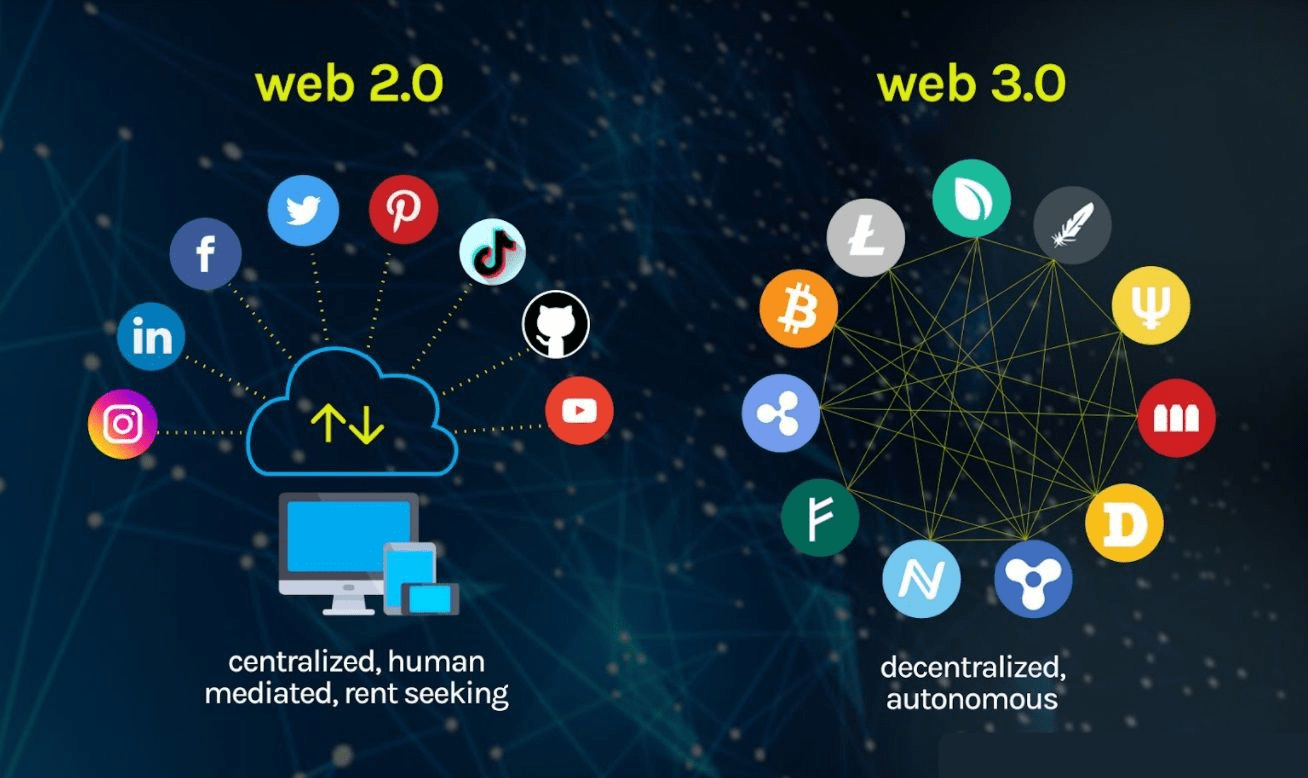The evolution of the relationship will be more like a transitional and integrative phase in the coming years rather than a direct conflict.

🔹 Key features of this evolution:
1. The integration phase (Hybrid Web2.5):
Major Web2 platforms will not disappear, but they will integrate some Web3 tools within their services (such as supporting digital wallets, cryptocurrency payments, or decentralized identities).
This creates what is called Web2.5, where the user experiences a familiar experience but with the advantages of Web3.
2. Digital identity and data sovereignty:
Web3 focuses on giving users ownership of their data, while Web2 is based on data centralization.
In the coming years, we may witness partnerships or compromises, where Web2 platforms grant users greater flexibility in controlling their data thanks to Web3 technologies.
3. The new digital economy:
Web2 companies are expected to add new business models based on tokens and NFTs to increase user engagement and create a community economy.
Example: Gaming or social media platforms may offer digital rewards that can be freely traded.
4. The gradual shift towards decentralization:
In the short term, Web2 will remain dominant due to its massive infrastructure and user base.
But with the maturation of Web3 technologies and their ease of use, we will see a gradual expansion of decentralized platforms competing with traditional Web2 services.
5. Legislation and regulation:
The biggest role will come from global laws, where governments will try to find a balance between innovation (Web3) and consumer protection (Web2).
📌 Summary:
The relationship between Web2 and Web3 in the coming years will not be an "elimination" of one or the other, but a gradual integration leading to a more open digital environment, where users have greater freedom, while major companies maintain their presence by adapting to this shift.

